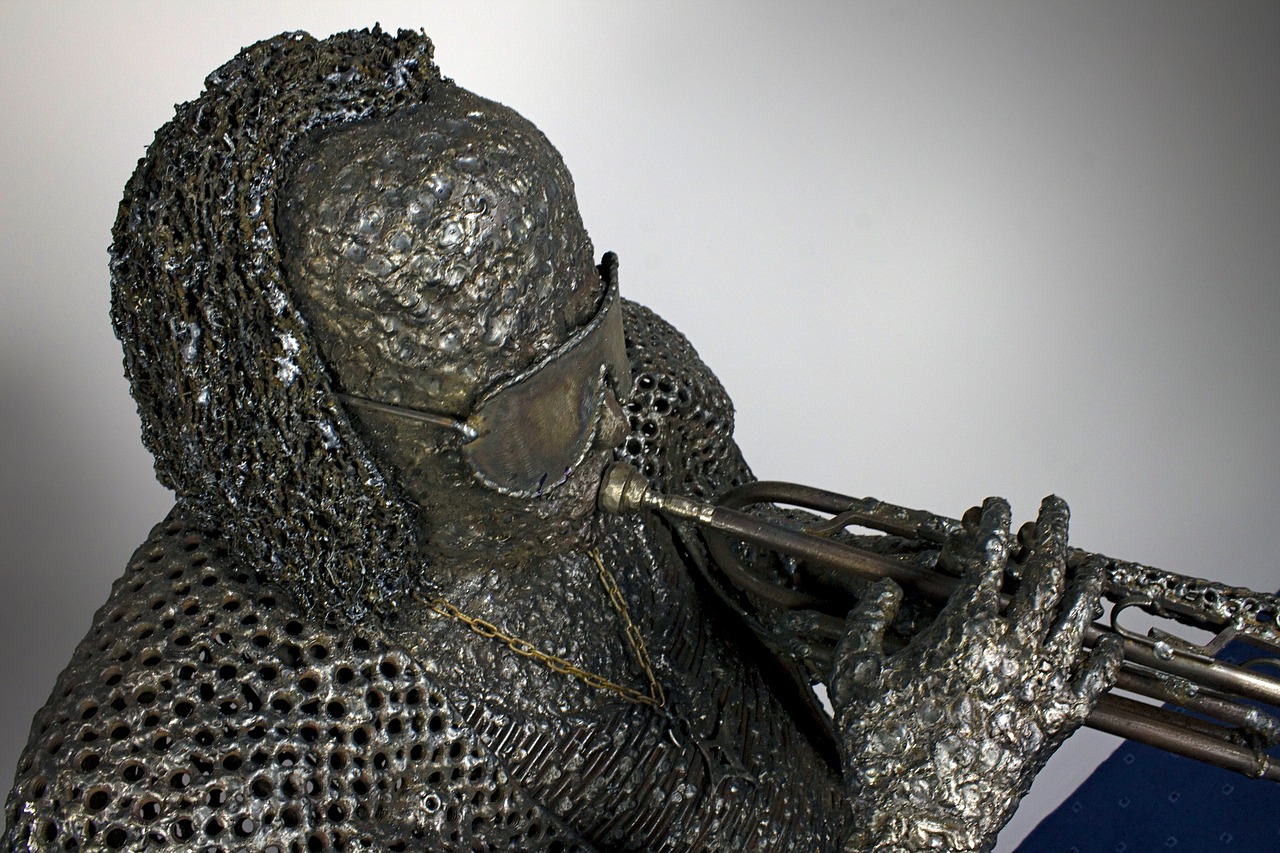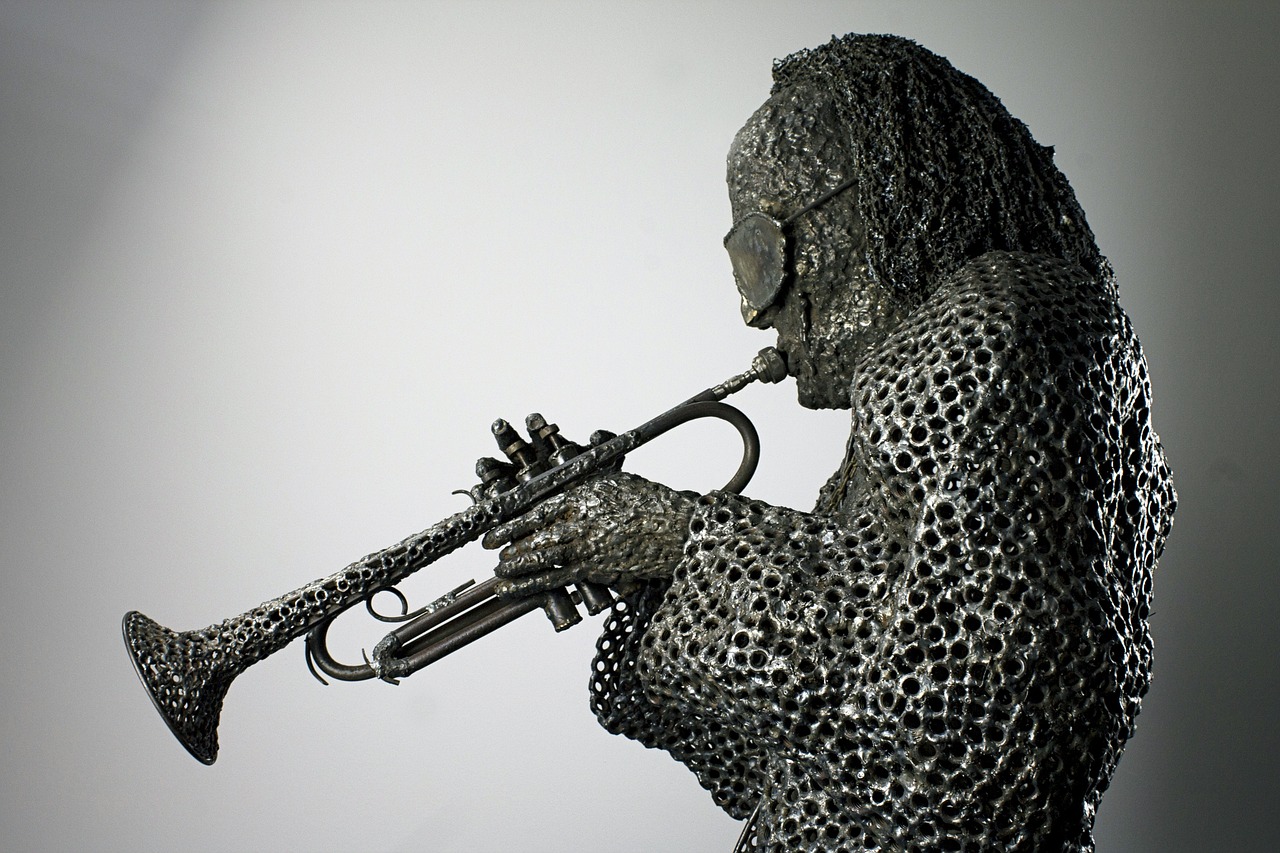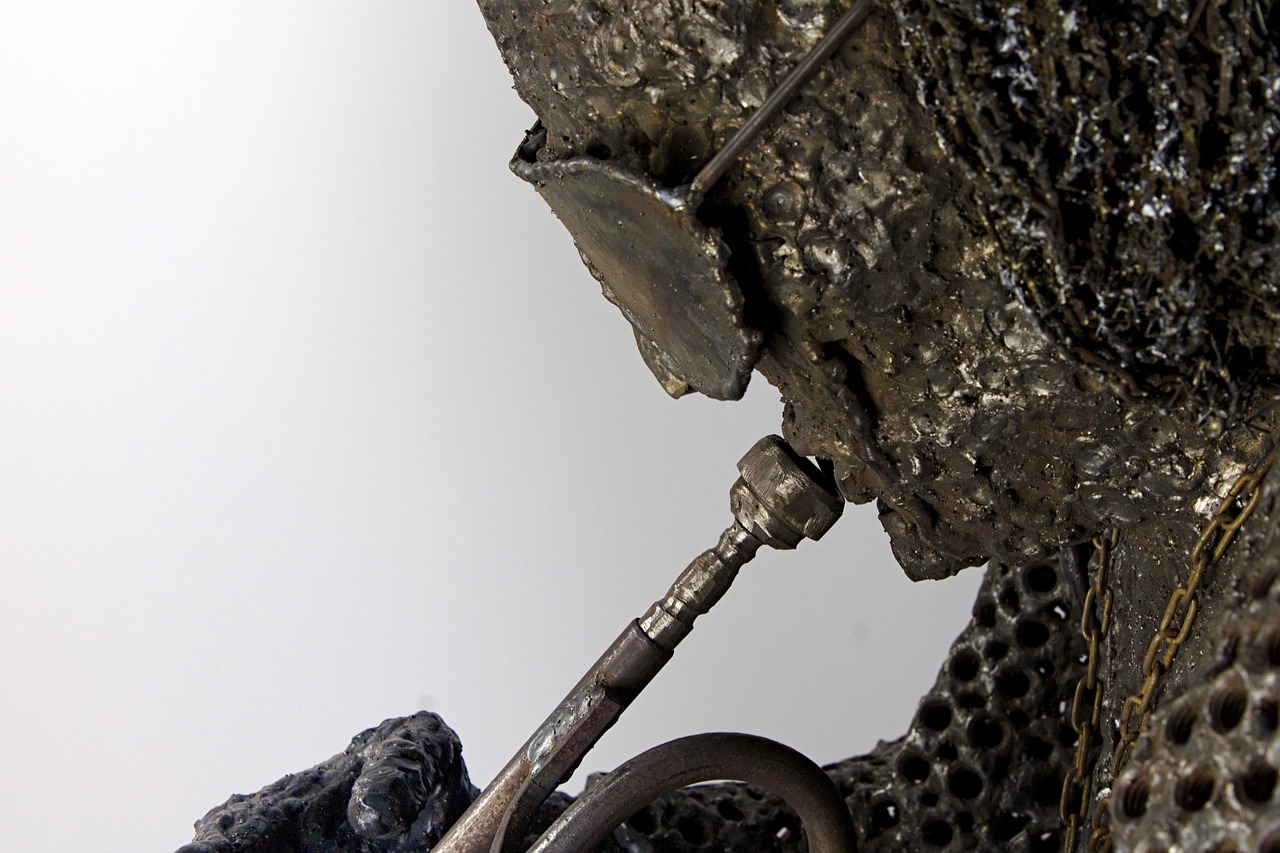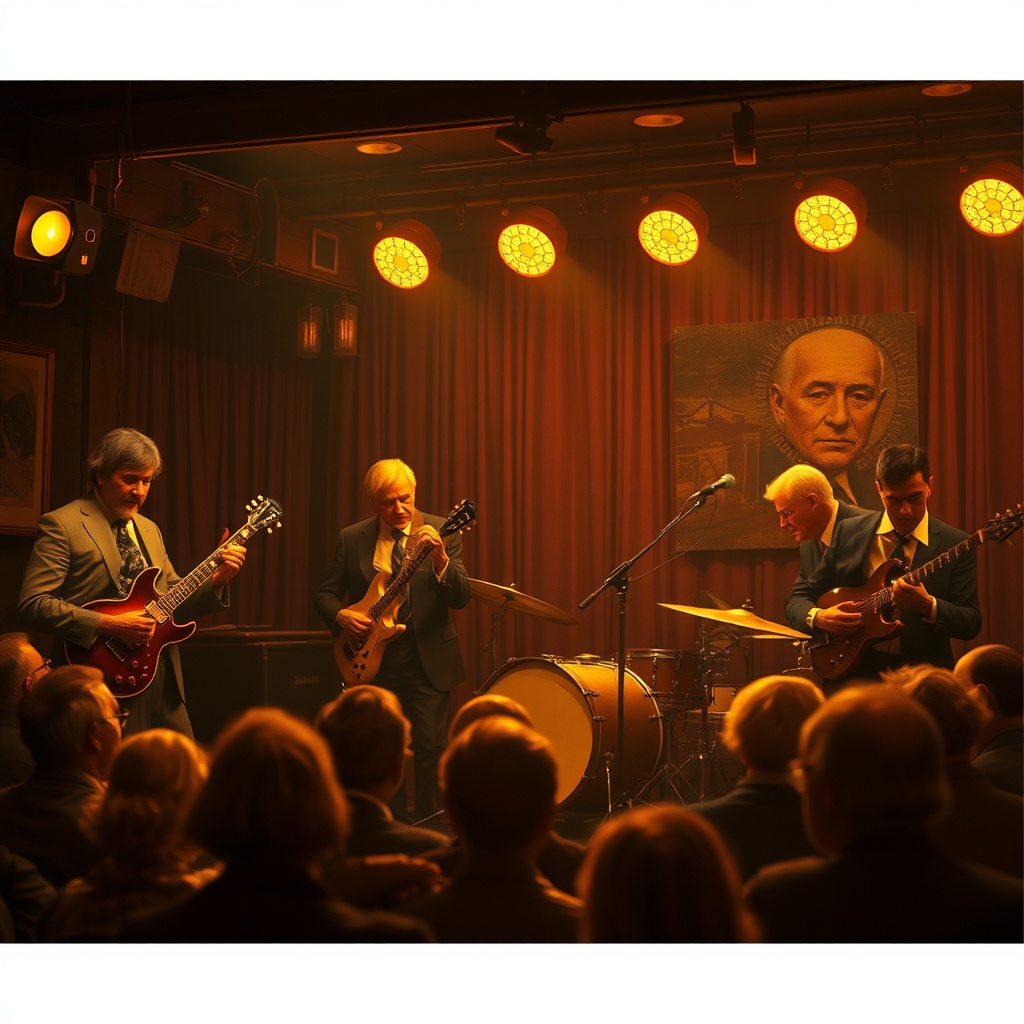The Soulful Serenade: A Journey Through the Iconic Jazz Clubs of the 1960s

The 1960s was a vibrant decade for jazz, characterized by an explosion of creativity and a profound cultural shift. During this period, jazz clubs became the heartbeat of the music scene, serving as sanctuaries for artists and enthusiasts alike. Let’s embark on an interactive journey through some of these iconic venues that defined the era.
Imagine stepping into a dimly lit room, the air thick with anticipation. The soft glow of candles flickers on tables adorned with checkered tablecloths. As you take a seat, the sound of a saxophone weaves through the air, igniting a memory. Here’s a closer look at some legendary clubs:
| Club Name | Location | Notable Performers |
|---|---|---|
| The Village Vanguard | New York City | Bill Evans, John Coltrane |
| Blue Note | New York City | Art Blakey, Thelonious Monk |
| Jazz Workshop | San Francisco | Charles Mingus, Ella Fitzgerald |
| Sweet Basil | New York City | Chick Corea, Pat Metheny |
Each of these clubs held a unique ambiance, encouraging spontaneous performances and collaborations. Let’s delve deeper into a few of the most influential venues:
- The Village Vanguard: Established in 1935, this club has been a launching pad for countless jazz careers. Imagine the resonance of Coltrane’s saxophone echoing off the brick walls, creating a timeless sound that still captivates audiences today.
- Blue Note: Known for its intimate setting and world-class acts, Blue Note became synonymous with the bebop movement. Picture yourself sipping a drink as you watch Art Blakey’s Jazz Messengers take the stage, their energetic rhythms enveloping you.
- Jazz Workshop: A hub for experimentation, this San Francisco venue attracted avant-garde artists. Can you hear the powerful bass lines of Charles Mingus that challenged conventions and pushed musical boundaries?
As we reflect on these clubs, think about the communal experience they offered. Jazz was not just music; it was a conversation, an exchange of emotions and stories. The audience was as much a part of the performance as the musicians themselves.
Many artists found their voices here, and their legacies continue to inspire generations. Let’s take a moment to celebrate a few of these legendary figures:
- Bill Evans: Known for his lyrical approach to piano, Evans transformed jazz with his innovative harmonies.
- John Coltrane: A pioneer of modal jazz, Coltrane’s improvisational skills redefined the genre.
- Ella Fitzgerald: The First Lady of Song, her vocal abilities and scat singing captivated audiences worldwide.
Now, close your eyes and envision one of these nights in a jazz club. The sound of trumpets, the rhythm of drums, and the soulful melodies create an unforgettable atmosphere. Feel free to share your own memories of jazz clubs or favorite performances from the era!
In conclusion, the 1960s jazz clubs were more than mere venues; they were cultural landmarks that shaped the musical landscape. They embodied the spirit of a generation seeking expression and connection. Let the echoes of the past inspire your present, as the legacy of jazz continues to thrive.
Legends in Harmony: The Unforgettable Collaborations of Jazz Giants

Step into the vibrant soundscape of the 1960s, where jazz legends came together, creating music that resonates through time. This era was marked by remarkable collaborations that not only showcased individual virtuosity but also created a tapestry of sound that defined a generation. Let’s explore these unforgettable partnerships!
1. Miles Davis and John Coltrane
Two titans of jazz: Miles Davis, the innovative trumpeter, and John Coltrane, the brilliant saxophonist. Their collaboration on the album “Kind of Blue” is a hallmark of modal jazz.
Imagine the atmosphere as they recorded tracks like “So What” and “Freddie Freeloader”. Can you hear the playful exchanges, the improvisational dialogues that took place? Each note they played was a conversation, a dance of musical ideas.
2. Ella Fitzgerald and Louis Armstrong
A match made in jazz heaven: The enchanting voice of Ella Fitzgerald paired with the gravelly tones of Louis Armstrong created magic. Their album “Ella and Louis” is a timeless classic.
Recall the warmth in their rendition of “Summertime”. Their chemistry was undeniable, blending her elegance with his exuberance. Close your eyes and let their voices wrap around you like a cozy blanket on a chilly evening.
3. Thelonious Monk and John Coltrane
Innovators at work: The collaboration between Thelonious Monk and John Coltrane was pivotal in jazz history. Their work together on “Monk’s Dream” pushed boundaries and redefined creativity.
Think about the intricate rhythms and dissonances in “Blue Monk”. Can you feel the tension and release in their music? It was a blend of Monk’s unique style and Coltrane’s improvisational genius, challenging listeners to think beyond conventional melodies.
4. Duke Ellington and Charles Mingus
Masterful composers: Duke Ellington’s lush orchestrations met the fiery spirit of Charles Mingus. Their collaborations, although rare, produced unforgettable moments in jazz.
Picture the boldness of “Money Jungle”. The interplay between Ellington’s sophisticated arrangements and Mingus’s raw energy created an electrifying experience. Can you sense the excitement that enveloped the studio as they crafted these pieces?
5. Bill Evans and Jim Hall
A delicate balance: The partnership between pianist Bill Evans and guitarist Jim Hall was a study in sensitivity and interplay.
Listen to their album “Undercurrent”. Tracks like “My Foolish Heart” reveal a conversation that is both intimate and expansive. Can you hear the subtle nuances, the way they respond to each other’s musical phrases? Their collaboration exemplifies the beauty of jazz as a shared experience.
These collaborations remind us that jazz is not just about individual talent; it’s about dialogue, connection, and the magic that happens when great minds unite. As you reflect on these legendary partnerships, allow their music to inspire you and transport you back to an era where every note told a story. Keep the spirit of jazz alive by sharing these memories with others!
Melodies of Change: How 1960s Jazz Shaped Modern Music

Introduction to the Jazz Revolution
The 1960s marked a transformative era in the world of jazz, one that resonated not only with the rhythms of its time but also laid the groundwork for future musical explorations. This was a decade where jazz musicians began to break free from traditional forms, leading to an explosion of creativity.
The Pioneers of Innovation
Consider the legends: The likes of John Coltrane, Miles Davis, and Ornette Coleman pushed boundaries, experimenting with new styles and techniques. Their contributions were not merely notes on a page; they were reflections of a society in flux.
Key Influences on Modern Music
Have you ever wondered how today’s music is influenced by the sounds of the past? The innovations from the 1960s are evident in many genres today. Let’s explore:
- Fusion of Genres: Jazz began to blend with rock, funk, and soul, creating a rich tapestry of sound that is still prevalent.
- Improvisation: The emphasis on spontaneous musical expression in jazz paved the way for artists in hip-hop and rock to explore freestyle techniques.
- Complex Rhythms: The intricate rhythms introduced by jazz musicians have influenced drummers and percussionists across multiple genres.
The Legacy of Jazz Virtuosos
As you reflect on your favorite music, consider how the virtuosos of the 1960s have shaped it. Their legacies continue to inspire artists today. For instance:
- John Coltrane’s modal jazz has influenced countless musicians in the realms of rock and electronic music.
- Miles Davis’ concept of “cool jazz” resonates in modern pop and R&B.
- Ornette Coleman’s avant-garde approach opened doors for experimental sounds in contemporary music.
Interactive Reflection
Think back to a song you love. Does it incorporate any jazz elements? Can you hear the echoes of those legendary jazz musicians? Take a moment to listen to a classic jazz track from the 1960s and notice how it might influence your appreciation of modern music.
Conclusion: The Everlasting Impact of Jazz
In conclusion, the sounds of the 1960s are not just relics of the past; they are the very foundation upon which modern music stands. As you continue to enjoy your favorite tunes, remember the melodies of change that jazz introduced to the world.
From Vinyl to Vibes: The Enduring Legacy of 1960s Jazz Albums
Unveiling the Magic of 1960s Jazz
Imagine a world where the sound of smooth saxophones, lively trumpets, and rhythmic bass lines fill the air. The 1960s was a golden era for jazz, a decade that birthed timeless albums and unforgettable artists. Are you ready to take a stroll down memory lane and explore the legacy of these legendary jazz albums?
The Vinyl Revolution
In the 1960s, vinyl records became the primary medium for music lovers. Do you remember the feeling of placing a needle on a spinning record? Let’s dive into some of the most influential jazz albums that defined this decade:
| Album Title | Artist | Year |
|---|---|---|
| Kind of Blue | Miles Davis | 1959 |
| Time Out | The Dave Brubeck Quartet | 1959 |
| Empyrean Isles | Herbie Hancock | 1964 |
| Getz/Gilberto | Stan Getz & João Gilberto | 1964 |
| Speak No Evil | Wayne Shorter | 1966 |
Jazz: A Cultural Movement
Jazz was not just music; it was a cultural revolution. It echoed the struggles and triumphs of a generation. Can you recall how artists like John Coltrane and Ella Fitzgerald captured the spirit of their time? Through their soulful melodies, they conveyed emotions and stories that resonated with listeners.
Beyond the Music: The Influence of Jazz
The impact of 1960s jazz extended far beyond the music itself. It influenced fashion, art, and social movements. Did you know that jazz clubs became hubs for social change? The improvisational nature of jazz mirrored the desire for freedom and expression. How did jazz shape your views on culture?
The Enduring Legacy
Even today, the echoes of 1960s jazz can be heard in various music genres. Its influence is undeniable. Artists continue to sample and pay homage to the greats. What are your favorite contemporary jazz artists or songs that remind you of this beautiful era?
Join the Conversation
Let’s reflect on our memories together. What was your favorite jazz album from the 1960s? How did it make you feel? Share your stories and let’s celebrate the enduring legacy of jazz!
An Evening with the Greats: Recreating the Magic of 1960s Jazz Performances
Step Back in Time
Imagine yourself transported back to the vibrant jazz clubs of the 1960s, where the air was thick with the soulful sounds of saxophones and the rhythmic pulse of double bass. Can you hear the echoes of the past? Let’s recreate that magical evening together, where every note tells a story.
The Icons of Jazz
During this era, legends like John Coltrane, Miles Davis, and Ella Fitzgerald graced the stages, captivating audiences with their unparalleled talents. Which artist resonates with you the most? Share your thoughts!
A Live Performance Experience
Imagine the lights dimming, the audience hushed in anticipation. The stage is set for a performance that will transport you to another world. What song do you hope to hear?
Interactive Jazz Journey
As we delve into the evening, feel free to join in! Tap your feet, snap your fingers, and let the music move you. Do you have a favorite jazz memory? Tell us about it!
The Spirit of Improvisation
Jazz is all about improvisation and spontaneity. Just like the greats of the 1960s, we encourage you to let your creativity flow. Have you ever tried improvising? What was your experience like?
Closing with Reflection
As the evening draws to a close, take a moment to reflect on the power of jazz. How has this music influenced your life? Share your insights with us, and let’s keep the spirit of the 1960s alive!
